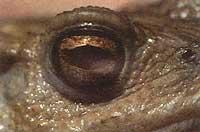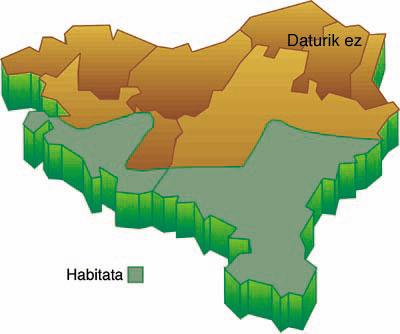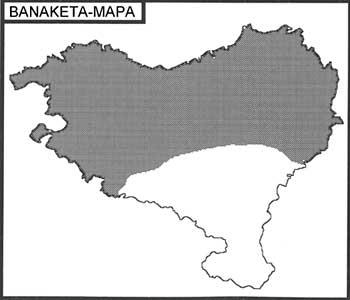Runner toad with the most beautiful eyes
1993/11/01 Aihartza, Joxerra Iturria: Elhuyar aldizkaria
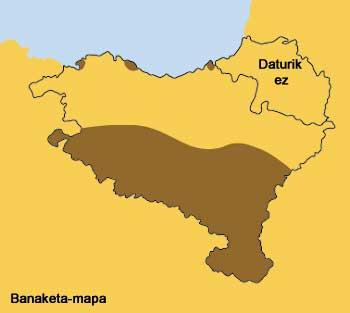
As in everything else, in talking about animals everyone has their loves and hatred. And besides them, of course, they are stereotypes and fashions. Just as some animals are without discussion an example of beauty, others are, according to most, the most lustful, hostile and unsustainable beings in the world. But if we approach a little, if we care about a little, everything being has a hidden beauty that we love. And that is the case of the toad corridor, which is the owner of the best eyes of Euskal Herria.
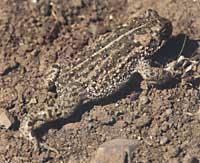
The runner toad (Bufo calamita) is a mid-sized cruiser. Being somewhat smaller than the common toad (Bufo bufo), it presents a compact uncle and a rugged leather dress in geminate like this, its most evident feature being that of a clear vertical line along the back. The triangular head is wider than long and in it large eyes are clearly expelled on the dorsal part. Like the rest of the bufonids, the runner toad has a horizontal beginini, surrounded by yellow-greenish irises, stained in black, with eyes fully dressed, a spectacular and spectacular image.
In the neck of the animal, and extended to the neck, parotoid glands can be observed almost parallel and not divergent, as in the case of the common toad. It is from these glands one of the main defenses of the toad.
In fact, this dwarf, a terrestrial animal with a dusk and nocturnal life, and a poor swimmer and jumper, has had to develop the right tools to protect itself from possible enemy predators. For example, the runner toad has a cryptic coloration that helps it hide the sharp looks of its enemies: the neck and belly whitish or yellowish white, and although without scars or slightly painted dark brown, usually presents a gray or green dorsal part dressed with spots of clear disruptive or brown function accused.
But in addition to cryptic clothing, the runner toad has more appropriate defenses to protect itself from enemies: in the rest of the anuros, and especially as occurs in all bufonids, in the case of the runner toad, the entire epidermi appears provided with poisonous glands, especially in the clumps scattered throughout the body and concentrated in the prominent supra-superior parotoid glands. Bufotoxin and bufotenin produced in these glands are highly capable poisons, and if they had the ability to puncture in the enemy's blood, the toads would be terrible animals. But it is not so. In case of bite, the surface poison of the runner toad irritates the mouth and lips of the enemy and the fatal hunter is forced to release the unhappy immediately, usually before he suffers excessive damage.
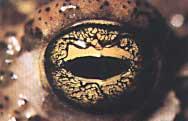
But besides being a bad hunt, the runner toad is a relentless and hungry hunter. Although we have mentioned that it is its short branches and that it is a bad jumper, this little animal is a fast walker and a big muddle that moves with surprising ease to ascend through the rough walls. And from dusk, due to its hunting areas, it is dedicated to capturing and seeing molluscs, worms, cucuruchos, spiders, ants and other invertebrates present, without being able to satiate.
The zeal of the runner toad is celebrated from spring to autumn. And as in most frogs and toads in our region, in the case of this species sexual selection is channeled through chanting.
When the season comes, males are the first to approach the wells and ponds, and as soon as they arrive they begin to do so, inflating the edge of the mouthpiece live singing. With all the males in the area, and attracted by their “wonderful voices”, the females begin to attend. But these come to them little by little, and then there are big fights between them to decide who fertilizes the eggs of the females in attendance.
The coupling is made by lumbar amplexos in which the male holds the female by the back of the front legs of his arms, very tight, without detaching at all. In this position, and tightening with the arms, the male helps the female to lay the eggs and as they are expelling, secrete the sperm, performing the external fertilization.
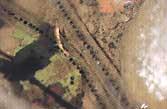
Thus, the female lays about 3,000 eggs in two long lines of gelatin that can reach several meters in length. The development is very fast and in five or six days small brown-dark cups of about 20 mm in length are born. The development and metamorphosis of these mazorcas take between 6 and 8 weeks longer, and in that period hundreds of 10-15 mm toads are disembarked with total courage, enthusiasm, with the intention of facing this new dry world. However, only a few will be able to reach sexual maturity at age four and try to look for the new generation.
As for its distribution, the toad is a western Atlantic and Mediterranean species found in Europe in the Iberian Peninsula, the French State, Switzerland, Belgium, Holland, England, Germany, Denmark, the south of Sweden, Latvia, Poland and the west of the former Soviet Union, except for Southern and Southeast Europe.
In Euskal Herria there is no region. As for the Mediterranean region, the toad corridor is a common species in almost all Alava and in the center and south of Navarre, where solid populations are observed. As for the habitat, the corridor toad appears above all in rural areas, in fallows, and in depressed areas, always below 1,000 m altitudes above sea level. It seems that it prefers high temperature or temperature-protected areas of the oceanic climate.
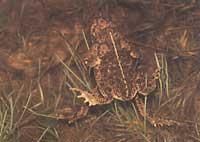
Therefore, on the coast several isolated populations have been observed in Bilbao, Lekeitio and Hondarribia, but two of them are ancient citations that today is not possible to confirm. In the case of Hondarribia, for its part, its population is maintained, but its survival is difficult if adequate protection measures are not adopted to cover and dry ponds and ponds, and whenever possible due to the timid tendency to build new constructions.
Technical data sheet: New Zealand Species: Bufo calamitaFamily: |

Gai honi buruzko eduki gehiago
Elhuyarrek garatutako teknologia




